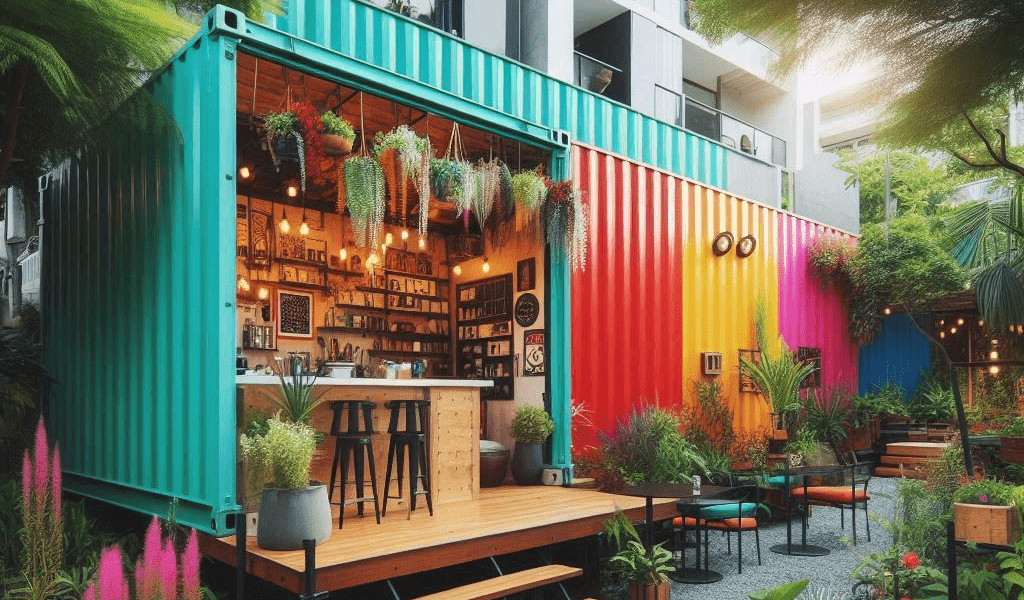Commercial Container Properties in Kenya architecture has gained significant attention over the past decade, heralded for its innovative approach to sustainable and affordable construction. While the allure of turning industrial containers into chic commercial spaces is strong, potential investors in Kenya must tread carefully. Despite the hype, container properties come with a host of issues and challenges that could turn a promising investment into a costly mistake. This blog post will explore some of the most pressing concerns and risks associated with investing in commercial container properties in Kenya.
1. Structural and Design Limitations
Shipping containers are built to be durable, but not necessarily to serve as permanent buildings. They are designed to withstand the rigors of sea transport, not to provide the comfort and functionality of commercial real estate. One of the primary structural issues in Kenya is corrosion. Containers are made of steel, which, although treated to resist rust, will eventually succumb to corrosion, especially in coastal areas like Mombasa, where the salty sea air can accelerate the process. This means that, over time, the structural integrity of the property could be compromised, requiring expensive repairs or replacements.
In addition, the modular design of shipping containers can pose significant challenges. While stacking containers may seem straightforward, creating a cohesive and functional commercial space often requires extensive modifications. These modifications can include cutting and reinforcing sections of the container, which can weaken the structure and increase construction costs. Moreover, the narrow width of containers can limit interior design options, making it difficult to create open, spacious environments that are often desirable in commercial properties.
2. Insulation and Climate Control
One of the biggest challenges of using shipping containers for commercial properties is ensuring adequate insulation and climate control. Containers are essentially metal boxes, and metal is a poor insulator. Without proper insulation, container buildings can become unbearably hot in the Kenyan summer and extremely cold during cooler seasons, making them uncomfortable for occupants. To mitigate this, investors must invest in high-quality insulation and climate control systems, which can significantly increase construction costs.
Additionally, poor insulation can lead to condensation issues. When warm, moist air comes into contact with the cool metal walls of a container, condensation can form, leading to mold and mildew problems. This not only affects the health and comfort of occupants but can also cause long-term damage to the structure of the property.
3. Zoning and Building Codes
Navigating zoning laws and building codes can be one of the most frustrating aspects of developing commercial container properties in Kenya. Many counties have specific regulations regarding the use of shipping containers as buildings. These regulations can vary widely from one location to another and can be complex and difficult to interpret. Failing to comply with local zoning laws and building codes can result in fines, legal challenges, and even the forced removal of the container structures.
Furthermore, because container buildings are a relatively new concept, many building inspectors and officials may not be familiar with the unique requirements and challenges they present. This can lead to delays and additional costs as you work to meet regulatory requirements.
4. Financing and Insurance
Securing financing and insurance for commercial container properties in Kenya can be significantly more challenging than for traditional buildings. Lenders and insurers may view container buildings as a higher risk due to their unconventional nature and the potential structural and maintenance issues. This can result in higher interest rates, more stringent loan conditions, and higher insurance premiums.
In some cases, investors may struggle to find lenders willing to finance container projects at all. This can make it difficult to secure the necessary capital to complete a project, putting the entire investment at risk.
5. Market Perception and Demand
While the idea of container properties is trendy and appealing to a niche market, the broader commercial real estate market in Kenya may be less enthusiastic. Market perception can significantly impact the demand for container properties. Potential tenants may have concerns about the durability, comfort, and appearance of container buildings, which can make them less likely to choose a container property over a more traditional building.
Moreover, the novelty factor of container buildings can work against them. What seems unique and innovative today may be seen as a passing fad tomorrow. If the trend of container architecture wanes, the demand for these properties could decrease, leading to higher vacancy rates and lower rental incomes.
6. Environmental Concerns
While shipping container buildings are often marketed as a sustainable option, the reality can be more complex. Repurposing containers for buildings does reuse materials that would otherwise be scrapped, which is positive. However, the environmental benefits can be offset by other factors. For instance, modifying containers to make them suitable for habitation requires significant resources. Cutting, reinforcing, and insulating containers all consume energy and materials, which can diminish the overall environmental benefit.
Additionally, many shipping containers contain harmful chemicals and paints used to protect them during transport. These materials must be carefully removed and disposed of to make the containers safe for use, adding to the environmental impact and overall cost of the project.
7. Long-term Durability and Maintenance
While shipping containers are built to be tough, they were designed for a specific purpose and environment. Using them as commercial properties can expose them to conditions for which they were not intended. Over time, this can lead to durability and maintenance issues. For example, the welding used to modify containers can weaken over time, especially if the containers are subjected to vibrations or structural stress.
Regular maintenance is essential to keep container properties in good condition, but this can be more complicated and costly than for traditional buildings. Investors must be prepared for ongoing maintenance costs and potential structural repairs that could affect the profitability of their investment.
8. Limited Customization Options
While containers offer a degree of flexibility, they come with inherent limitations on customization. The standard size and shape of shipping containers can restrict design possibilities, making it difficult to create unique and functional commercial spaces. This is particularly problematic for businesses that require specific layouts or large open spaces.
Customization often requires significant modification to the containers, which can be expensive and may compromise the structural integrity of the building. Additionally, the modular nature of container buildings can result in a “cookie-cutter” aesthetic that may not appeal to all potential tenants.
9. Resale Value
The resale value of container properties can be unpredictable. Because container buildings are still relatively new and unconventional, there is limited data on how well they retain their value over time. Factors such as market perception, the quality of construction, and the overall condition of the property will all play a role in determining resale value. However, the unique and sometimes polarizing nature of container properties means they may appeal to a narrower pool of buyers, potentially limiting resale opportunities.
10. Technological and Infrastructure Challenges
Adapting shipping containers for commercial use often requires incorporating modern technologies and infrastructure. This can include everything from plumbing and electrical systems to internet connectivity and HVAC systems. Integrating these systems into a container structure can be more complex and costly than in traditional buildings due to the need to cut and reinforce the containers. Additionally, the compact and confined spaces of containers can make it challenging to install and maintain these systems, potentially leading to higher operational costs.
Conclusion
While the concept of commercial container properties is undeniably appealing, it is crucial for investors in Kenya to be aware of the numerous challenges and risks involved. From structural and design limitations to regulatory hurdles and market perception issues, there are many factors that can make investing in container properties a risky proposition. By thoroughly researching and understanding these pitfalls, investors can make more informed decisions and weigh the potential rewards against the inherent risks.
As with any investment, due diligence is key. Prospective investors should conduct comprehensive feasibility studies, consult with experts in container architecture, and carefully consider the long-term viability of their projects. While container properties can offer unique opportunities, they also come with unique challenges that must be carefully navigated to ensure a successful and profitable investment.


